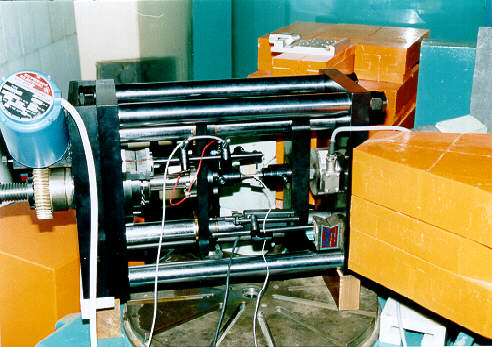Investigation of internal strains in polycrystals
Because of their high penetration ability into most materials thermal neutrons have been found very useful probe in measurements of internal strains in polycrystalline samples. The neutron diffraction technique can provide information on both macro- and micro-strains. The determination of macrostrains (e =Δd/do) is based on the measurement of small angular shifts of diffraction peaks caused by small lattice-parameter variations of Δd in a sampled volume with respect to the stress-free lattice spacingdo. The magnitude of stress can be calculated by using appropriate elastic moduli. Investigation of microstrains is based on the analysis of the shape of broadened diffraction profiles. Two high-resolution neutron strain scanners are available at the medium-power reactor LVR-15 in NPI Řež. The instruments are equipped with curved Si and Ge monochromators and with linear high-resolution position-sensitive detectors for fast recording of diffraction profiles.

Both diffractometers operate with a sufficiently high Δd/d-resolution of about (2-2.5)x10-3, information on microstrain state of materials could be thus received as well. Recently, a lot of work has been done investigating the distribution of residual strains resulting from different technological treatments as well as phase specific strains in multiphase materials and in composites. Nowadays, of special interest are deformation tests realized in situ at the neutron beam. Such experiments are possible due to the small and compact deformation rig enabling both tensile and compressive tests up to maximum loading of ±20 kN which can be easily mounted at both strain scanners. In this case, we focus mainly on studies of duplex stainless steels and shape memory alloys.
[1.1] J. Kulda, P. Mikula, P. Lukas, M. Kocsis: Physica B180-181 (1992) 1041.
[1.2] M. Vrana, P. Mikula, P. Lukas, J. Kulda: Nucl. Instr. Meth. A338 (1994) 125.
[1.3] P. Mikula et al.: J. de Physique IV 3 (1993) 2183.
[1.4] P. Klimanek, T. Kschidock, P. Lukas, P. Mikula, A. Mucklich: J. de Physique IV 3 (1993) 2143.



